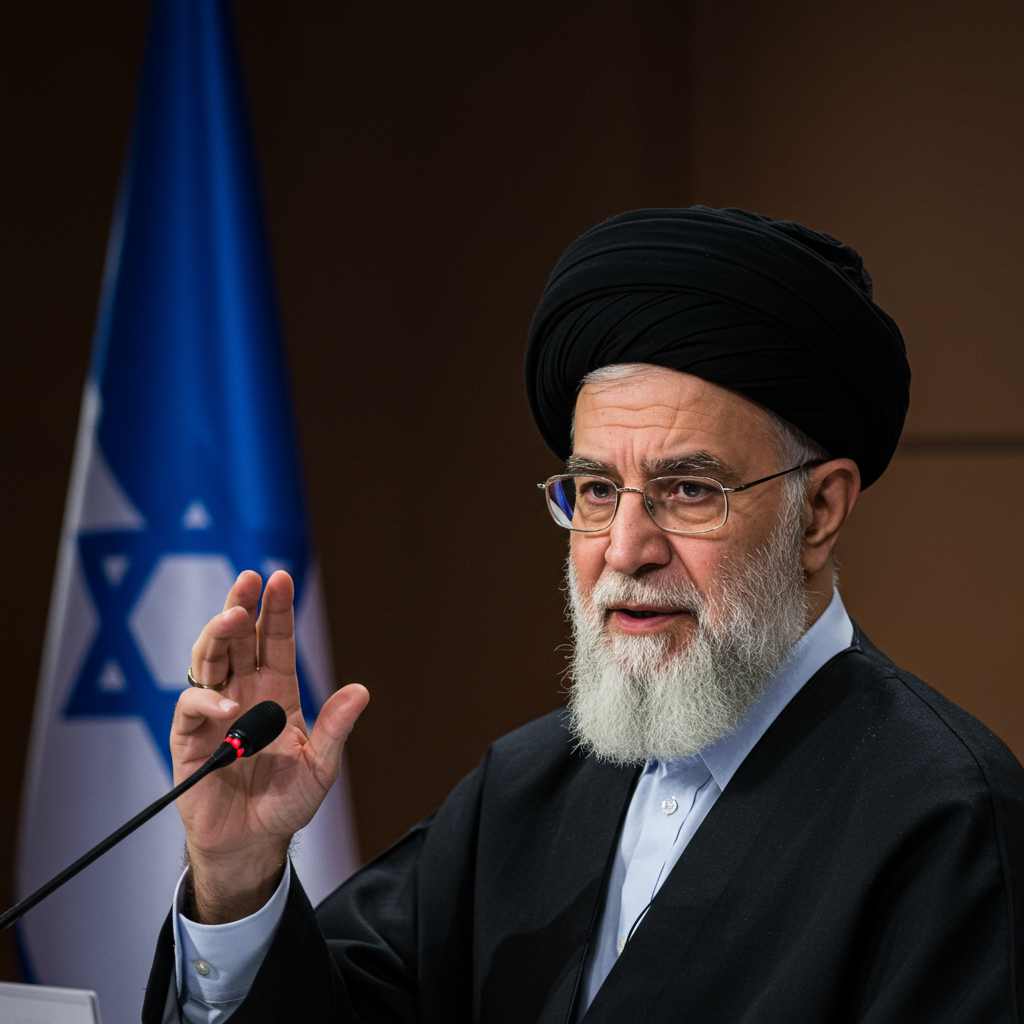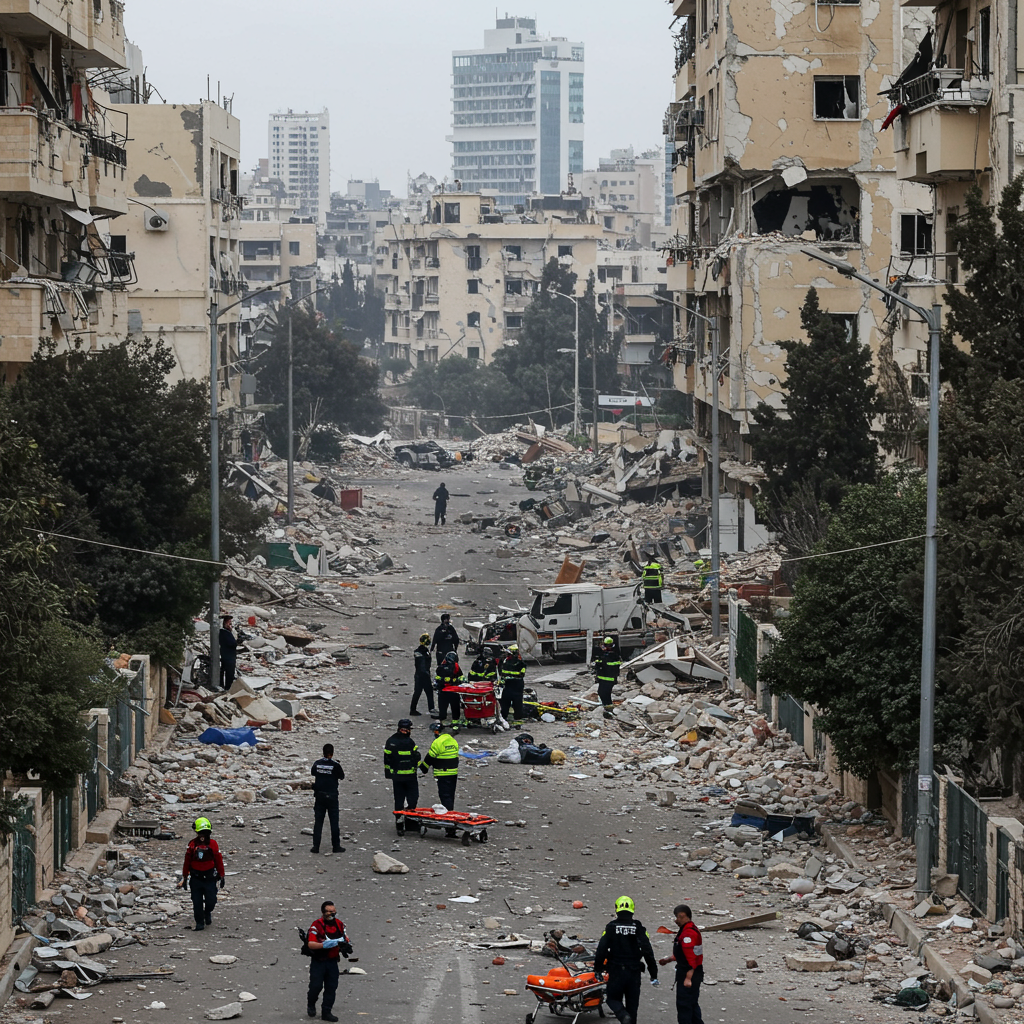The global community is on high alert following a stark warning from the head of the United Nations’ nuclear watchdog. Rafael Grossi, Director-General of the International Atomic Energy Agency (IAEA), indicates that Iran retains the technical capacity to enrich uranium to levels suitable for a nuclear weapon within “a matter of months.” This assessment directly challenges recent claims from the United States administration regarding the effectiveness of military strikes targeting iran’s nuclear facilities.
According to Grossi, while recent strikes by the US and Israel caused significant damage to Iranian nuclear infrastructure, the impact was severe but “not total.” This contradicts assertions from former US President Donald Trump, who claimed Iranian nuclear sites were “totally obliterated” and “completely destroyed.” Grossi emphasized that essential knowledge and some physical capacity remain.
Post-Strike Assessment: Iran’s Resilient Nuclear Capacity
Despite being targeted by military action, Iran’s nuclear program possesses underlying resilience, according to the IAEA chief. Rafael Grossi specifically noted that Iran could resume enriching uranium relatively quickly. He mentioned the potential to have “a few cascades of centrifuges spinning and producing enriched uranium” in a matter of months, or potentially even sooner.
This expert assessment aligns with a preliminary report from the Pentagon that was leaked earlier in the week. That intelligence suggested US strikes were likely to set back Iran’s nuclear program by months, rather than dismantling it entirely or by decades, as some claims suggested. The targeted sites included key facilities at Fordo, Natanz, and Isfahan. Grossi’s statements underscore the view that Iran’s nuclear expertise and industrial base were not eradicated.
The Technical Reality: Uranium Enrichment Explained
Understanding the potential threat requires grasping the basics of uranium enrichment. This process increases the concentration of the fissile isotope, Uranium-235, necessary for both nuclear power and weapons. Natural uranium contains less than 1% of this isotope.
For commercial nuclear power reactors, uranium is typically enriched to around 3.67% purity. Creating a nuclear weapon, however, requires uranium enriched to very high levels, often exceeding 90% purity, known as weapons grade.
Centrifuges are key machines used in the enrichment process. They spin uranium gas at high speeds, separating the lighter U-235 isotopes from the heavier U-238 isotopes. A single centrifuge performs a small amount of separation; cascades – interconnected series of centrifuges – are needed to achieve higher purity levels.
Iran has reportedly achieved enrichment levels as high as 60% purity in the past. This level is significantly higher than needed for civilian purposes and is a short technical step away from weapons-grade material. According to previous IAEA findings, Iran had amassed a stockpile of 60%-enriched uranium potentially sufficient for several nuclear bombs if further refined. Grossi highlighted concern over this existing stockpile, noting the IAEA lacks definitive information on whether it was moved or damaged during the recent strikes. Verifying the status of this material is crucial for international oversight.
Escalating Tensions and Diplomatic Breakdown
The recent military strikes occurred amidst already high tensions. Israel initiated attacks on June 13, targeting Iranian nuclear and military sites, citing concerns that Iran was nearing the capability to build a nuclear weapon. The United States later joined these strikes, focusing on three specific nuclear facilities. These actions followed an IAEA finding the previous month that Iran was in breach of its non-proliferation obligations, the first such finding in two decades.
Iran, for its part, consistently denies seeking nuclear weapons, maintaining its program is purely for peaceful civilian energy purposes. However, the relationship between Iran and the IAEA, the body tasked with verifying this, has severely deteriorated.
Following the strikes and the IAEA’s non-compliance report, Iranian lawmakers moved to suspend cooperation with the UN agency. Tehran has since rejected the IAEA’s requests to inspect the damaged facilities. Iran’s foreign minister, Abbas Araghchi, reportedly described Grossi’s insistence on visiting the bombed sites as “meaningless and possibly even malign in intent.” Suspending cooperation could involve withdrawing inspectors, halting reporting, and ceasing surveillance, significantly hindering the international community’s ability to monitor Iran’s nuclear activities. Iran’s messaging on the extent of damage has also been mixed, with Supreme Leader Ayatollah Ali Khamenei claiming the strikes were insignificant while the Foreign Minister acknowledged “excessive and serious” damage.
The JCPOA Context: A Deal Undermined
The current nuclear landscape is deeply shaped by the history of the 2015 Joint Comprehensive Plan of Action (JCPOA), a multilateral agreement between Iran and world powers. Under this deal, Iran agreed to significant restrictions on its nuclear program in exchange for sanctions relief. Key limitations included restricting uranium enrichment to no more than 3.67% purity and banning enrichment activities at the Fordo plant for 15 years.
However, the agreement began to unravel after the United States unilaterally withdrew from the JCPOA in 2018 under the Trump administration, arguing it did not sufficiently prevent Iran from pursuing a nuclear weapon and reinstating crippling sanctions. In response, Iran progressively breached the deal’s restrictions. This included resuming uranium enrichment at the underground Fordo facility in 2021 and increasing the purity level and quantity of its enriched uranium stockpile, reaching 60% purity.
Ceasefire Fragility and Future Threats
While a ceasefire is reportedly in place between Iran and Israel, the underlying tensions remain exceptionally high. The possibility of future military confrontation has not been removed. Former President Trump has indicated he would “absolutely” consider further bombing if intelligence suggests Iran is enriching uranium to concerning levels.
Iran’s military leadership has also expressed skepticism regarding the durability of the current calm. Iran’s armed forces chief of staff, Abdolrahim Mousavi, stated doubts about Israel’s compliance with the ceasefire. He affirmed Iran’s readiness to respond forcefully if attacked again, despite not initiating the recent conflict. The recent 12-day period of assault reportedly resulted in significant casualties, including hundreds of Iranian civilians and dozens in Israel, highlighting the human cost of this ongoing regional instability.
Path Forward: Diplomacy or Confrontation?
In the face of this volatile situation and the potential for Iran to quickly advance its enrichment capabilities, finding a resolution is critical. Despite the current standoff and Iran’s suspension of cooperation, IAEA Director-General Grossi continues to advocate for dialogue. He believes a “long-lasting solution” following the military actions must ultimately be a diplomatic one.
The challenges to diplomacy are substantial. Years of mistrust, conflicting national interests, sanctions, and Iran’s current refusal to engage with the IAEA complicate any path back to negotiations. Re-establishing trust and verification mechanisms is paramount but difficult under current conditions. The situation highlights that while military strikes can cause temporary setbacks, they may not eliminate a nation’s accumulated nuclear knowledge and capacity. Continuous international monitoring, typically performed by the IAEA, is widely considered essential for verifying the peaceful nature of a nuclear program. Without this oversight, the risks of clandestine activities increase significantly.
Frequently Asked Questions
What is the current status of Iran’s uranium enrichment capacity after the recent strikes?
According to IAEA Director-General Rafael Grossi, Iran still possesses the necessary “industrial and technological capacities” to resume enriching uranium. He assesses that despite significant damage from recent US and Israeli strikes, the damage was “not total.” Iran could potentially restart enriching uranium to levels suitable for a bomb, having “a few cascades of centrifuges spinning,” within a matter of months. This contradicts claims that Iran’s program was completely destroyed.
What is the role of the IAEA and Rafael Grossi in monitoring Iran’s nuclear program?
The International Atomic Energy Agency (IAEA) is the UN’s nuclear watchdog responsible for verifying that countries comply with their non-proliferation commitments and that nuclear material is used only for peaceful purposes. Rafael Grossi is the current Director-General leading the agency. The IAEA uses inspectors and surveillance to monitor declared nuclear facilities. However, Iran’s parliament has recently moved to suspend cooperation with the IAEA, rejecting requests from Grossi to inspect sites, which hinders the agency’s ability to provide full assurances.
What does 60% enriched uranium mean, and why is Iran’s stockpile concerning?
Uranium enriched to 60% purity contains a much higher concentration of the fissile U-235 isotope than the approximately 3.67% needed for nuclear power. While not weapons-grade (typically 90%+), 60% purity is a significant technical step closer and reduces the time and effort required to reach weapons-grade levels. According to the IAEA, Iran previously accumulated a stockpile of 60%-enriched uranium potentially sufficient for producing several nuclear bombs if further enriched. This stockpile is concerning because it represents a potential shortcut towards nuclear weapons capability.
Conclusion
The recent statements from the IAEA head paint a clear, albeit concerning, picture: despite military action, Iran retains the core capacity to pursue uranium enrichment towards weapons-grade levels relatively quickly. This reality starkly contrasts with more definitive claims of program destruction. The situation is further complicated by the breakdown in cooperation between Iran and the IAEA, diminishing international oversight at a critical juncture. While a fragile ceasefire holds, the underlying tensions and divergent positions on Iran’s nuclear ambitions and the efficacy of military force mean that the path forward remains uncertain. Diplomacy is highlighted as the necessary long-term solution, but re-establishing trust and verification will be a considerable challenge. The international community continues to monitor Iran’s nuclear activities closely, emphasizing the crucial, albeit currently hampered, role of the IAEA.



